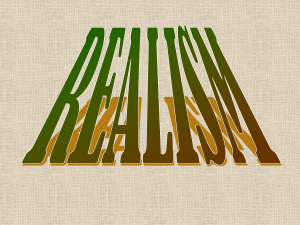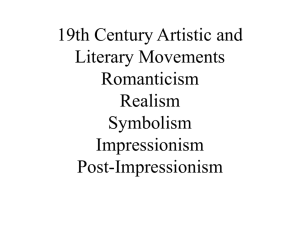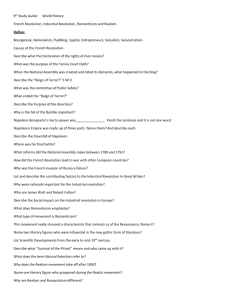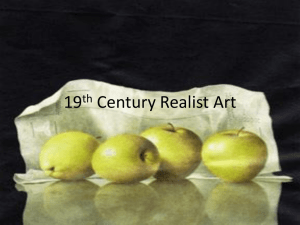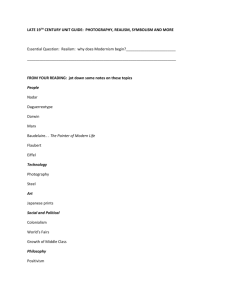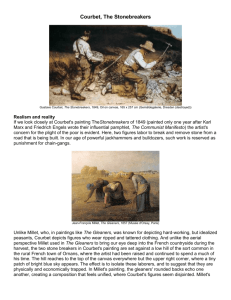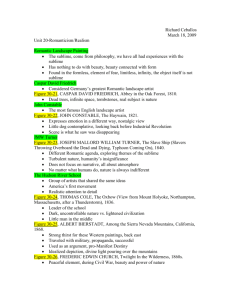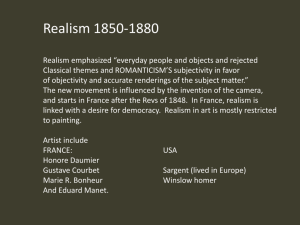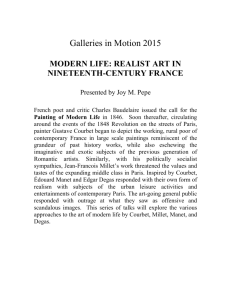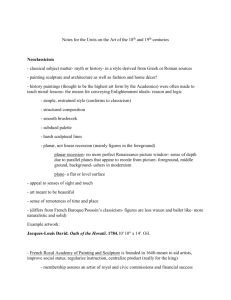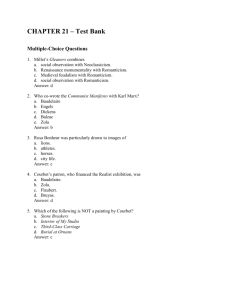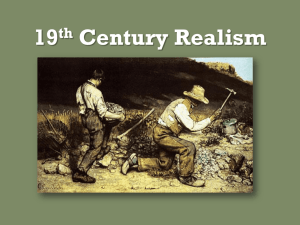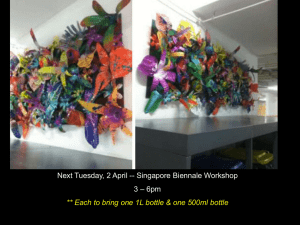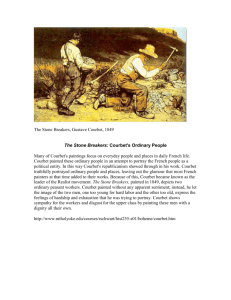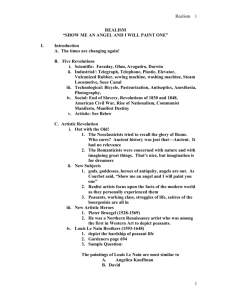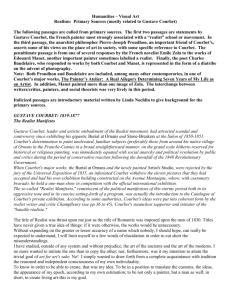Industrial Revolution and its Impact on Art
advertisement
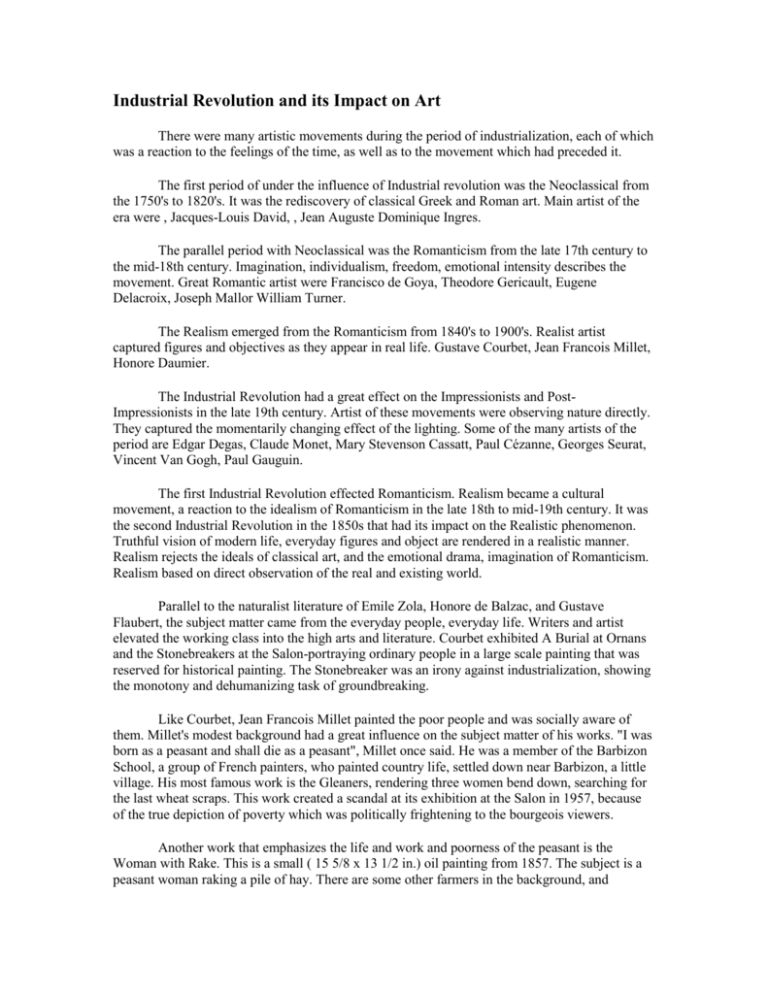
Industrial Revolution and its Impact on Art There were many artistic movements during the period of industrialization, each of which was a reaction to the feelings of the time, as well as to the movement which had preceded it. The first period of under the influence of Industrial revolution was the Neoclassical from the 1750's to 1820's. It was the rediscovery of classical Greek and Roman art. Main artist of the era were , Jacques-Louis David, , Jean Auguste Dominique Ingres. The parallel period with Neoclassical was the Romanticism from the late 17th century to the mid-18th century. Imagination, individualism, freedom, emotional intensity describes the movement. Great Romantic artist were Francisco de Goya, Theodore Gericault, Eugene Delacroix, Joseph Mallor William Turner. The Realism emerged from the Romanticism from 1840's to 1900's. Realist artist captured figures and objectives as they appear in real life. Gustave Courbet, Jean Francois Millet, Honore Daumier. The Industrial Revolution had a great effect on the Impressionists and PostImpressionists in the late 19th century. Artist of these movements were observing nature directly. They captured the momentarily changing effect of the lighting. Some of the many artists of the period are Edgar Degas, Claude Monet, Mary Stevenson Cassatt, Paul Cézanne, Georges Seurat, Vincent Van Gogh, Paul Gauguin. The first Industrial Revolution effected Romanticism. Realism became a cultural movement, a reaction to the idealism of Romanticism in the late 18th to mid-19th century. It was the second Industrial Revolution in the 1850s that had its impact on the Realistic phenomenon. Truthful vision of modern life, everyday figures and object are rendered in a realistic manner. Realism rejects the ideals of classical art, and the emotional drama, imagination of Romanticism. Realism based on direct observation of the real and existing world. Parallel to the naturalist literature of Emile Zola, Honore de Balzac, and Gustave Flaubert, the subject matter came from the everyday people, everyday life. Writers and artist elevated the working class into the high arts and literature. Courbet exhibited A Burial at Ornans and the Stonebreakers at the Salon-portraying ordinary people in a large scale painting that was reserved for historical painting. The Stonebreaker was an irony against industrialization, showing the monotony and dehumanizing task of groundbreaking. Like Courbet, Jean Francois Millet painted the poor people and was socially aware of them. Millet's modest background had a great influence on the subject matter of his works. "I was born as a peasant and shall die as a peasant", Millet once said. He was a member of the Barbizon School, a group of French painters, who painted country life, settled down near Barbizon, a little village. His most famous work is the Gleaners, rendering three women bend down, searching for the last wheat scraps. This work created a scandal at its exhibition at the Salon in 1957, because of the true depiction of poverty which was politically frightening to the bourgeois viewers. Another work that emphasizes the life and work and poorness of the peasant is the Woman with Rake. This is a small ( 15 5/8 x 13 1/2 in.) oil painting from 1857. The subject is a peasant woman raking a pile of hay. There are some other farmers in the background, and elements of the natural countryside, trees, grass, and a farm-wagon. The most attention is on the full size woman, who quietly doing her work. She is placed in the foreground, against the sky. The honesty of the work, the suggesting sympathy of poor fills up with emotions. This was Millet’s nostalgic approach, distict from the other Realists’ like Courbet, Daumier. Van Gogh was a great admirer of Millet and studied his work and made copies of them, such he copied the Woman with Rake. http://essayblock.com/Art/industrial.html
